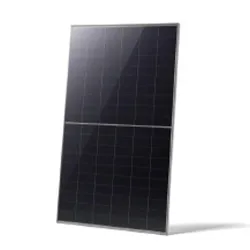Typical Sizes and Dimensions of Solar Panels for Efficient Energy Solutions
Understanding Typical Solar Panel Dimensions
In recent years, the demand for solar energy has surged as more individuals and businesses seek sustainable methods to reduce energy costs and combat climate change. A crucial aspect of adopting solar technology is understanding the dimensions of solar panels, which can significantly affect installation and performance. This article explores the typical dimensions of solar panels, their types, and how these factors influence efficiency and system design.
Typical Dimensions of Solar Panels
Solar panels come in various sizes and shapes, but the most common residential solar panels generally measure around 65 inches by 39 inches (approximately 1.65 meters by 1 meter) and have a thickness of about 1.5 to 2 inches (approximately 3.8 to 5.1 cm). This standard size allows for optimal efficiency and reflects a balance between power output and the physical space required for installation.
Commercial solar panels tend to be larger, often measuring around 77 inches by 39 inches (about 1.96 meters by 1 meter) or even larger. Their increased dimensions allow for a higher energy output, which is particularly beneficial for businesses that need substantial electricity to operate.
Types of Solar Panels and Their Dimensions
Solar panels can mainly be categorized into three types monocrystalline, polycrystalline, and thin-film. Each type has its typical dimensions and efficiency ratings.
1. Monocrystalline Solar Panels Known for their high efficiency and sleek appearance, monocrystalline panels are typically around 65 inches by 39 inches. These panels consist of single-crystal silicon, which allows them to convert sunlight into electricity more effectively than other types. The increased efficiency means that fewer panels are needed to achieve the same power output, making them a popular choice for residential installations.
typical solar panel dimensions

2. Polycrystalline Solar Panels These panels are made from multiple silicon crystals, resulting in slightly lower efficiency than monocrystalline panels. They also tend to be more affordable. The dimensions of polycrystalline panels are similar to their monocrystalline counterparts, usually around 65 inches by 39 inches. However, their efficiency may require homeowners to install more panels to meet their energy needs.
3. Thin-Film Solar Panels Unlike crystalline panels, thin-film technology uses layers of photovoltaic materials that can be deposited onto various substrates. This results in a wide variety of dimensions and shapes, making thin-film panels flexible and adaptable to different surfaces. They are typically lighter and less expensive, but their lower efficiency means that larger areas are needed for installation.
Impact of Dimensions on Installation and Performance
The dimensions of solar panels play a vital role in the installation process. Smaller panels can be easier to handle and install, especially in residential settings with limited roof space. However, larger panels may be more appropriate for commercial settings where space is not as much of a constraint.
Moreover, the dimensions affect the energy output. Larger panels can capture more sunlight, leading to greater energy production. However, this also means that the area where they are installed must be able to accommodate their size. Professionals must consider factors such as roof angles, shading, and local regulations when designing a solar energy system.
Conclusion
Understanding typical solar panel dimensions is essential for anyone considering the transition to solar energy. With common sizes ranging from approximately 65 inches by 39 inches for residential panels to larger options for commercial applications, potential users should be mindful of how these dimensions will fit into their specific situation. By choosing the right type and size of solar panels, homeowners and businesses can maximize their energy efficiency and take a significant step toward a sustainable future. As technology advances and solar panel designs evolve, the importance of dimensions will continue to play a pivotal role in the adoption of this clean energy source.
-
String Solar Inverter: The High-Efficiency Solution for Smart Solar EnergyNewsJul.14,2025
-
Revolutionizing Rooftop Energy with the Power of the Micro Solar InverterNewsJul.14,2025
-
Power Independence with Smart Off Grid Solar Inverter SolutionsNewsJul.14,2025
-
On Grid Solar Inverter: Powering the Future with Smart Grid IntegrationNewsJul.14,2025
-
Monocrystalline Solar Panels: High-Efficiency Power for the Future of Clean EnergyNewsJul.14,2025
-
Bifacial Solar Panel: A Smarter Investment for Next-Generation Energy SystemsNewsJul.14,2025







